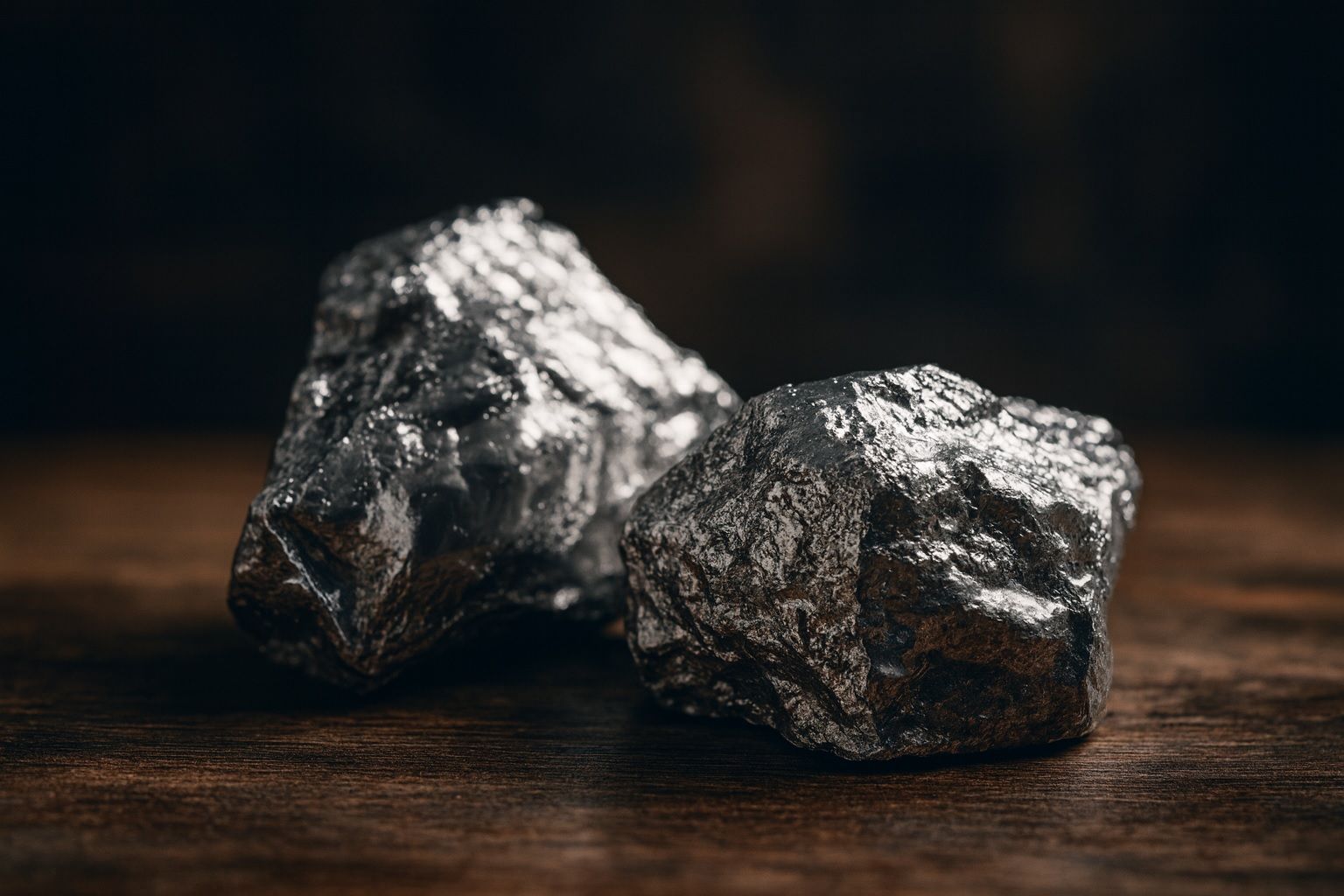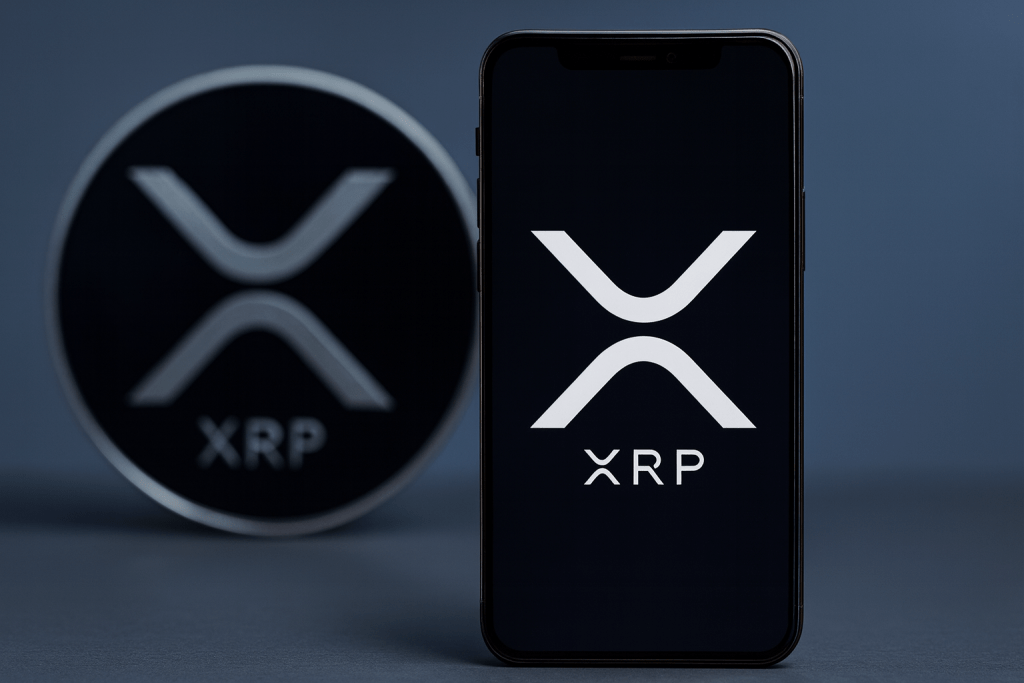- Silver soars to 14-year highs: Prices have rocketed to around $48–49 per ounce – the highest since 2011 – putting the metal within a few percent of its all-time peak (~$49.50 reached in 2011) [1]. The “white metal” has gained roughly 60–65% in 2025 alone, dramatically outperforming gold’s ~45% year-to-date rise [2].
- Safe-haven frenzy: Investors are flocking to precious metals amid economic and geopolitical jitters, driving silver and gold sharply higher [3] [4]. Gold’s record-breaking run (nearly $4,000/oz) is spilling over into silver – often dubbed the “poor man’s gold” – attracting waves of ancillary buying that turbocharge silver’s rally [5].
- “Perfect storm” of drivers: A confluence of factors fuels silver’s boom. Falling real interest rates and a weaker dollar (on expectations of U.S. Federal Reserve rate cuts) have boosted non-yielding assets like silver [6]. At the same time, robust industrial demand – from solar panels and electronics to clean-tech – is underpinning silver’s value, even as investors seek a safe-haven hedge against global uncertainty [7].
- Tight supply squeeze: Silver’s supply can’t keep up. 2025 marks the fifth consecutive year of a global silver supply deficit [8]. In the past five years, demand has exceeded output by ~800 million ounces; this year alone is projected to see a shortfall of around 187 million ounces [9]. Mine production is largely inelastic – much silver is a byproduct of other mining – so output cannot quickly ramp up despite surging prices [10].
- Investor frenzy & inflows:Investment demand is red-hot. Silver-backed ETFs accumulated ~95 million ounces in the first half of 2025, a record influx that pushed total holdings to over 1.13 billion oz (worth $40+ billion) [11]. Speculators have also piled in – net long positions in COMEX silver futures have more than doubled since late 2024 [12] – indicating momentum funds riding the uptrend.
- Record within reach – then what? Market analysts widely expect silver to test the $50 level imminently [13]. HSBC’s metals strategists just hiked their forecasts and say silver “stands on the cusp” of its 2011 record, predicting the metal is likely to surpass $50/oz in the near term [14]. The bank envisions a volatile $45–$53/oz range through year-end [15]. Some bulls go further – arguing a decisive breakout above $50 could even ignite a “generational” price spike toward $75 or $100 if a physical squeeze intensifies [16].
- Volatility ahead – caution warranted:Silver is notoriously volatile. The last two times it neared $50 – in 1980 and 2011 – spectacular booms were followed by brutal busts [17]. “Silver can be wildly volatile, prone to boom-and-bust cycles more than gold,” notes one long-time market watcher [18]. Veteran analysts warn the $50 threshold is a key psychological barrier that could trigger turbulence again now [19]. Still, if silver punches through and sets a new high, the lack of technical “overhead” resistance above that point might “open the floodgates” to even sharper gains [20].
Silver Soars to 14-Year Highs, Closing in on Record Levels
Silver’s price has exploded upward in 2025, putting the vaunted $50 per ounce milestone within sight. As of October 8, 2025, spot silver trades around $48.8/oz [21] – territory not seen since 2011. Just days earlier it touched $47.8, the loftiest price in over 14 years [22]. This puts silver only a few percentage points below its all-time nominal high of ~$49.50 (set in April 2011) [23]. The metal’s ascent this year has been stunning: silver is up roughly 60–65% year-to-date [24], after starting 2025 in the low $30s. By contrast, gold – which hit its own record highs near $4,000/oz this week – is up about 50% in the same period [25]. Silver’s stronger surge has significantly narrowed the gold–silver ratio (the number of silver ounces equal in value to one gold ounce) to around 82, its tightest in a year [26]. This indicates silver has been outperforming gold lately, reversing a multi-year trend of lagging behind. “Silver is a bit of a catch-up trade, as it had been underperforming gold for several quarters prior to mid-2025,” observes Aakash Doshi, head of gold strategy at State Street [27].
Investors and traders are now eyeing the $50 mark as both an enticing target and a potential inflection point. Twice before, silver has approached this roughly $50 ceiling – in January 1980 and April 2011 – only to crash hard afterward [28]. In 1980, a speculative frenzy (fueled by the Hunt brothers’ infamous attempt to corner the silver market) briefly sent prices to about $49.80/oz before the bubble burst. In 2011, silver spiked to $49.51 amid a post-financial-crisis commodities boom, then rapidly plunged. These historical episodes underscore that towering silver rallies can swiftly reverse. With silver once again flirting with $50, many analysts are urging caution. As seasoned market experts note, $50 is a psychologically significant resistance level; hitting it could spur profit-taking or volatility in the short term [29]. On the other hand, if silver smashes through into record-high territory, bulls argue there is little technical resistance above, which “could open the floodgates” for even more dramatic gains [30]. In short, silver’s next moves could be especially explosive – in either direction.
What’s Driving Silver’s 2025 Surge?
Multiple catalysts have converged to create a perfect storm for silver prices this year. A major factor is soaring safe-haven demand. Investors worldwide have sought refuge in precious metals amid a backdrop of economic uncertainty and geopolitical strains. Gold’s meteoric rise – it broke above $3,900/oz to record highs in early October – has been the clearest expression of this flight to safety. That rally is spilling over into silver. “Gains in gold attract ancillary buying in silver,” analysts at HSBC note, given the two metals’ historically close relationship [31]. In effect, gold’s record run is pulling silver up in its slipstream. Silver often acts as high-beta gold: when gold jumps, silver tends to soar by an even larger percentage, as appears to be happening now [32] [33].
Several macroeconomic and political factors are fueling investor anxiety, thereby boosting precious metals. In the U.S., the Federal Reserve has shifted from raising rates to considering cuts as growth slows – investors are now anticipating Fed rate cuts within months [34] [35]. Non-yielding assets like gold and silver become more attractive when interest rates peak or fall, since the opportunity cost of holding them drops. Indeed, expectations of imminent Fed easing have been a key driver in gold’s 2025 climb [36], and by extension silver’s. Meanwhile, a range of global risks have intensified the “safe-haven” bid. In early October, the U.S. government was in a partial shutdown, Europe was rattled by political turmoil (France’s government briefly collapsed), and bond yields were volatile amid inflation fears [37]. “Political uncertainty in the U.S., France and Japan” alongside the Fed outlook helped send gold to record highs [38] – dynamics that likewise benefited silver. Many investors have also grown wary of lofty stock market valuations in 2025 and are reallocating into hard assets as a hedge [39] [40]. “There’s a kind of ‘barbelling’ where gold becomes a hedge against any failure of the AI-driven tech boom…,” says one strategist, noting that precious metals can buffer portfolios if high-flying equities stumble [41]. This mix of inflation worries, geopolitical tensions, and market froth has made silver and gold shine as crisis insurance.
In addition to these safe-haven flows, currencies and rates have played a role. The U.S. dollar index is down in 2025 [42], partly thanks to those shifting Fed expectations. A softer dollar tends to lift dollar-priced commodities like silver by making them cheaper for non-U.S. buyers. Real interest rates (nominal rates minus inflation) have also pulled back from their highs, easing one of the headwinds that precious metals faced in prior years [43]. With inflation still simmering and central banks signaling easier policy ahead, the macro environment has swung in favor of precious metals. “Weaker U.S. dollar…[and] debates over Fed rate cuts…could impact prices” positively, HSBC noted in an August outlook [44].
Crucially, silver isn’t just a haven asset – it’s also an industrial metal, and demand from industry has been robust. Silver is a critical component in a range of manufacturing and green technologies. According to the Silver Institute, the metal is used in solar panels, electronics (from computers and smartphones to 5G infrastructure), electric vehicle components, medical devices, water purification, and more [45]. This gives silver a unique dual role: part precious metal, part industrial commodity. In 2025, industrial offtake for silver hit all-time highs in sectors like solar energy, even outpacing global economic growth [46] [47]. The ongoing global push for clean energy has been especially significant – solar panel production is now a top driver of silver consumption, given silver’s role in photovoltaic cells. Electrification trends and electronics demand have likewise kept silver consumption strong. These fundamental uses mean that even absent the investor frenzy, silver has underlying demand supporting it. “Key sectors such as the photovoltaic industry and electronics” are expected to keep silver demand on an upward trajectory for years [48]. (Notably, HSBC did caution that extremely high prices might temper some industrial usage in the short run – for instance, jewelry and silverware demand often dips when silver gets too expensive [49]. But any such pullback is expected to be limited and likely offset by gains in tech and solar applications by 2026 [50].)
In sum, 2025’s silver surge is being driven by a potent mix of safe-haven investment flows, favorable macro conditions (rates and dollar), and solid industrial consumption. This “perfect storm” of factors has created an environment where investors, institutions, and even commercial users are all buying silver at once, propelling the price to multi-year highs [51].
Supply Crunch: Deficits and Squeeze Fears
While demand for silver is surging, the supply side of the equation is notably tight – adding more fuel to the rally. Silver mine output has been struggling to grow, and recent data show that the market has been in structural deficit for several years running. In fact, 2025 is on track to be the fifth consecutive year where global silver demand outstrips supply [52]. Over 2019–2024, the world consumed roughly 800 million ounces more silver than was mined, drawing down above-ground inventories to fill the gap [53]. This year, the deficit is expected to be on the order of 180–200 million ounces [54] [55] – meaning the shortfall alone equates to about 20% of annual mining production (which is typically around 800–900 Moz). Such a consistent supply/demand gap is unusual in the silver market’s modern history; for context, the early 2010s saw surplus years, but the situation has flipped to stubborn shortfalls recently [56].
What’s causing the squeeze? On the supply side, mine production has been flat to modestly rising, but not nearly enough to meet demand. Silver mining is tricky: around 70–75% of silver is produced as a byproduct of mining for other metals (like lead, zinc, copper, or gold) [57]. This means pure silver mines (primary silver producers) contribute only a fraction of output. Even as silver prices jump, most base-metal miners can’t easily ramp up silver output unless their primary metal production also increases. There’s also a geological and economic limit – silver ore grades have been declining at some older mines, and new large silver-rich deposits are scarce. The result is that supply reacts slowly to price spikes. “Mine supply is inelastic… output can’t quickly ramp up even as prices rise,” note analysts, since so much silver is tied to byproduct production that doesn’t respond to silver’s price alone [58]. Recycling (scrap silver) provides some buffer, and indeed higher prices tend to bring out more scrap, but recycling alone hasn’t been enough to close the gap. The London Bullion Market Association (LBMA) vault data shows inventories of silver bullion have been trending lower, suggesting that above-ground stockpiles are being drawn down to meet demand [59]. If inventories get too low – for example, if headline stockpiles in London or on COMEX fall to critically low levels – some analysts warn it could spark panicked buying and an “explosive rally”, as industrial users and investors scramble for remaining supply [60].
On the demand side, investment demand has been the wild card exacerbating the deficit. Physical coin and bar purchases surged in recent years, and 2025 has seen massive inflows into silver-backed ETFs. In just the first half of 2025, silver exchange-traded funds added about 95 million ounces to their vaults, bringing total held silver to near record highs (over 1.13 billion ounces) [61]. For perspective, that hoard of 1.13 billion oz is roughly one year’s worth of global silver demand. The value of silver held by ETFs now exceeds $40 billion [62]. These funds make it easy for institutions and retail investors to gain exposure to silver, and they have effectively siphoned a huge amount of physical silver off the market. In addition, speculative positions in futures have skyrocketed – net long positions by money managers on COMEX doubled compared to end-2024 [63]. This indicates that hedge funds and trend-following traders jumped on the rally, adding further upward pressure on prices. Overall, investor appetite for silver in 2025 has been intense: “Investors are piling in,” as one market report put it bluntly, noting record ETF inflows and bullish futures bets as a major feature of this rally [64].
This combination of constrained supply and voracious demand sets the stage for volatility. With inventories tightening, some traders are even talking about the possibility of a “silver squeeze” – a scenario where a scramble for physical silver drives prices sharply higher in a short time. We saw a mini-version of this in early 2021 when a social-media-fueled buying spree briefly pushed silver up, though not to new highs. Now, conditions appear more fundamentally supported than in 2021, but the supply constraints are real. If industrial users find it hard to procure silver at current prices, or if ETF demand continues unabated, the market could tighten further. HSBC analysts point out that physical silver supplies remain muted even with 2025’s higher prices, and investment demand is “robust despite [the] sharp run-up”, implying the deficit could persist [65]. In other words, $50 silver hasn’t magically unlocked a flood of new supply (at least not yet), so the market remains vulnerable to upside price pressure if demand stays strong.
Will Silver Hit $50 – And What Happens If It Does?
With silver now just a stone’s throw from the $50 milestone, the key question is what comes next. Analysts broadly agree that a test of the record high is likely imminent barring a sudden change in market sentiment [66]. “The silver market stands on the cusp of the record high of nearly $50/oz set in 2011,” HSBC wrote in a note on October 7, “and is likely to surpass that level in the near term.” [67]. The bank accordingly hiked its price forecasts – it now sees silver ending 2025 around $49/oz (up from earlier predictions in the $35–38 range) and expects early 2026 to remain elevated as well [68] [69]. HSBC’s revised outlook calls for a wide trading range of roughly $45 to $53 per ounce for the remainder of 2025 [70]. In 2026, they foresee silver averaging in the $40s, higher than previously thought [71]. This upgrade underscores how dramatically sentiment has shifted in silver’s favor over just a few months (back in mid-2025, silver was still in the $20s and $30s and such high targets seemed distant).
Other market watchers echo the cautious optimism. Many mainstream banks and research firms have near-term silver targets in the mid-$40s to $50 range – essentially where the price already is or just slightly above [72]. In late September, as silver was breaking out, several analysts saw $50 as a realistic milestone within months [73]. Now that silver is within a whisker of that mark, some are setting their sights beyond. Bullish experts argue that if silver can finally break through the double-top resistance of 1980/2011 (~$50), it could enter a new “unchartered territory” for prices. Without the historical selling pressure that has capped rallies at $50, silver could run significantly higher before finding a new equilibrium. Predictions of $60, $75, even $100 silver have emerged from the more enthusiastic corners of the market [74]. For instance, one prominent technical analyst suggested a “generational” price jump could occur if a genuine physical shortage takes hold, implying prices many multiples of current levels in an extreme scenario [75]. These are outlier forecasts, but they reflect the exceedingly bullish sentiment among silver’s true believers.
However, not everyone is convinced that silver’s skyward trajectory will continue unchecked. As noted, history provides a sobering reminder that parabolic rises can reverse violently. Some analysts are urging investors to enjoy the ride but manage risk prudently. “No asset goes up in a straight line,” one commodities strategist reminded, advising that volatility (and occasional pullbacks) are to be expected in a rally of this magnitude [76]. In the case of silver, any number of things could spark a correction: a cooldown in gold’s rally, a resolution to a geopolitical crisis easing safe-haven demand, an unexpected turn in Fed policy, or simply technical selling if traders decide to take profits at the $50 level. HSBC itself, while positive on silver, cautioned that the metal’s surge is “due more to silver’s relationship with gold than to underlying fundamentals” [77]. In other words, silver has been riding gold’s coattails, and if gold’s momentum falters, silver could be vulnerable. The bank noted that some fundamental drivers (like industrial demand growth) were actually a bit soft in 2025 – suggesting silver’s price might be running ahead of what supply/demand alone would justify. This doesn’t mean the rally will suddenly collapse, but it’s a reminder that market sentiment can swing quickly.
Another factor to watch is the broader economic cycle. If fears of recession or financial instability (which have underpinned safe-haven buying) start to fade, investor allocation to precious metals might ease. On the flip side, if inflation resurges or new crises emerge, metals could get a second wind. Central bank policy will be critical: continued hints at rate cuts tend to support silver and gold, whereas any hawkish surprises could dampen enthusiasm. For now, traders overwhelmingly expect the Fed to trim rates and global central banks to maintain a dovish lean into 2026 [78] [79], which provides a favorable backdrop for precious metals.
In the immediate term, all eyes are on the $50 threshold. The manner in which silver approaches and (potentially) breaks that level may set the tone for the next phase. A quick surge past $50 could trigger stop-loss orders or algorithmic buying, causing a spike higher – but it could just as easily prompt a wave of profit-taking from those who have waited years for silver to revisit the previous high, causing a sharp pullback. The volatility around this zone is likely to be high. Long-term silver bulls argue that even if a pullback occurs, the metal’s structural bullish case (supply deficits, monetary demand, industrial growth) remains intact, and that any dip would be a buying opportunity. More conservative analysts suggest trimming positions as $50 nears, given the risk of a repeat of past boom-bust patterns.
For now, the market mood remains ebullient. Each time silver has hit a round-number milestone on this rally ($30, $40, $45, etc.), it attracted fresh buyers – a sign of strong momentum trading. As one trader quipped, “$50 is magnetizing the market; everyone wants to see if we can finally break the curse this time.” Whether that “curse” is broken or not, silver’s remarkable 2025 run has firmly reestablished it as a leading story in global markets.
A Historical Perspective: Silver’s Global Saga
Silver’s current spike is impressive, but in many ways, history is repeating – the metal has a long track record of causing economic turbulence and opportunity. In fact, the ebbs and flows of silver have literally shaped world history. In the mid-15th century, Europe experienced a “Great Bullion Famine” when silver (and gold) grew so scarce that coins virtually disappeared from circulation. As silver’s value skyrocketed relative to other goods, prices for everything else collapsed (a deflationary spiral), commerce slowed, and the feudal economy strained under the lack of money [80]. This hunger for silver set the stage for epic voyages: European powers began desperately seeking new sources of precious metals. Christopher Columbus’s journey, and the subsequent Spanish conquest of the Americas, were driven in no small part by the quest for gold and silver. The result was the discovery of vast silver lodes in places like Potosí (Bolivia) and Zacatecas (Mexico). By the late 16th and 17th centuries, Spain was shipping tonnes of New World silver back to Europe and on to Asia, flooding the world with silver. This torrent of bullion reinvigorated commerce, spurred inflation in Europe, and even destabilized centuries-old institutions. As author Tomas Pueyo notes, the influx of New World silver contributed to the decline of feudalism and the rise of capitalism and nation-states – it effectively greased the wheels of the emerging global economy [81]. In other words, silver literally helped transform the world from a medieval system into the modern era of trade and nation-states.
Why does this historical detour matter? It’s a reminder that silver has always been volatile and impactful. Periods of scarcity (like 15th-century Europe or the supply deficits today) can send its value soaring, while periods of abundance (like the colonial silver glut) can radically alter economies. Today’s investors are, of course, far removed from galleons and conquistadors. But the fundamental dynamics of supply, demand, and human psychology remain familiar. In 2025, we have a high-tech version of a silver rush – ETFs and futures markets channeling billions into a metal that society still fervently values. And like the adventurers of old, modern investors face both the lure of riches and the peril of volatility that come with silver’s territory.
As silver stands near $50 once again, its story is at an inflection point. Will it break through to uncharted heights, or repeat a cycle of boom and bust? The only certainty is that this ancient metal – one of humanity’s first currencies and a perennial store of value – will continue to fascinate, vex, enrich, and humble participants in its market. For now, the world watches the silver surge of 2025 with bated breath, mindful that every silver lining can cast a shadow, but also that fortunes have always favored the bold in the saga of silver.
Sources: Recent market data and analyses from Fortune [82], Investing.com [83] [84], Reuters [85] [86], Tech Space 2.0 (ts2.tech) [87] [88], 24/7 Wall St. [89], and historical insights from Tomas Pueyo [90] [91], among others.
References
1. ts2.tech, 2. ts2.tech, 3. ts2.tech, 4. www.reuters.com, 5. www.investing.com, 6. ts2.tech, 7. ts2.tech, 8. ts2.tech, 9. ts2.tech, 10. ts2.tech, 11. ts2.tech, 12. ts2.tech, 13. ts2.tech, 14. www.investing.com, 15. www.investing.com, 16. ts2.tech, 17. ts2.tech, 18. ts2.tech, 19. ts2.tech, 20. ts2.tech, 21. www.investing.com, 22. ts2.tech, 23. ts2.tech, 24. www.investing.com, 25. www.investing.com, 26. ts2.tech, 27. ts2.tech, 28. ts2.tech, 29. ts2.tech, 30. ts2.tech, 31. www.investing.com, 32. 247wallst.com, 33. 247wallst.com, 34. www.reuters.com, 35. www.reuters.com, 36. www.reuters.com, 37. www.reuters.com, 38. www.reuters.com, 39. www.reuters.com, 40. www.reuters.com, 41. www.reuters.com, 42. 247wallst.com, 43. ts2.tech, 44. www.reuters.com, 45. 247wallst.com, 46. ts2.tech, 47. ts2.tech, 48. www.reuters.com, 49. www.reuters.com, 50. www.reuters.com, 51. ts2.tech, 52. ts2.tech, 53. ts2.tech, 54. ts2.tech, 55. www.reuters.com, 56. ts2.tech, 57. ts2.tech, 58. ts2.tech, 59. ts2.tech, 60. ts2.tech, 61. ts2.tech, 62. ts2.tech, 63. ts2.tech, 64. ts2.tech, 65. www.investing.com, 66. ts2.tech, 67. www.investing.com, 68. www.investing.com, 69. www.investing.com, 70. www.investing.com, 71. www.investing.com, 72. ts2.tech, 73. ts2.tech, 74. ts2.tech, 75. ts2.tech, 76. www.reuters.com, 77. www.reuters.com, 78. www.reuters.com, 79. www.reuters.com, 80. unchartedterritories.tomaspueyo.com, 81. unchartedterritories.tomaspueyo.com, 82. pordge.ru, 83. www.investing.com, 84. www.investing.com, 85. www.reuters.com, 86. www.investing.com, 87. ts2.tech, 88. ts2.tech, 89. 247wallst.com, 90. unchartedterritories.tomaspueyo.com, 91. unchartedterritories.tomaspueyo.com









